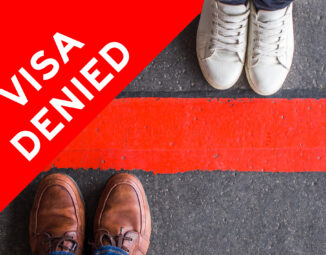Buy American, Hire American: President Trump’s Executive Order Hints at Possible H-1B Visa Reform
On Tuesday, April 18, 2017, President Trump signed his “Buy American, Hire American” Executive Order during a visit to the Snap On Tools headquarters in Kenosha, Wisconsin. Lauded by the administration as a sign of the administration’s commitment to protect American workers and U.S. manufacturing, the executive order calls on all federal agencies to “scrupulously monitor, enforce, and comply with Buy American laws.” Tuesday’s Executive Order also calls for reform of the H-1B visa program. In a single sentence the Order declares: “In order to promote the proper functioning of the H-1B visa program, the Secretary of State, the Attorney General, the Secretary of Labor, and the Secretary of Homeland Security shall, as soon as practicable, suggest reforms to help ensure that H-1B visas are awarded to the most-skilled or highest-paid petition beneficiaries.”
The H-1B visa was created by Congress to attract high skilled labor, especially in the STEM (Science, Technology, Engineering, and Mathematics) professions, in which there has historically been a deficit of U.S. workers. Most stakeholders agree that the H-1B visa system is woefully in need of reform. 65,000 H-1B visas are available each fiscal year, with an additional 20,000 for foreign workers with a U.S. Master’s degree or higher. The tech industry, pharmaceuticals, and energy sectors have long sought an increase in H-1B workers to meet increasing demand. For FY2018, 199,000 H-1B visa applications were received, for only 85,000 visas. This is the fourth year in a row that the cap was reached in under a week. Many argue that these statistics demonstrate that the visa limit is artificially low and fails to keep pace with the needs of the U.S. economy. Critics, however, see the H-1B visa as a means of displacing U.S. workers. One utility company in California, for instance, sees H-1B workers as an opportunity for cost savings. The company hired H-1B workers to be trained by their U.S. counterparts. Those positions were then eliminated and the jobs then offshored. Critics point out that the H-1B visa was not designed to replace American workers, but rather for high-skilled employees who can’t be found in the U.S.
To counter abuses of the H-1B system, and consistent with the President’s Executive Order, Senator Chuck Grassley (R- IA) and Dick Durbin (D-Il), have introduced legislation to reform the H-1B visa program. S. 180 — 115th Congress: H-1B and L-1 Visa Reform Act of 2017, requires U.S. Citizenship and Immigration Services (USCIS) to prioritize the annual allocation of H-1B visas, giving preference to STEM graduates, advanced degree holders, those being paid a high wage, and those with valuable skills. Additionally, the bill would crack down on outsourcing companies that import large numbers of H-1B and L-1 workers for temporary training purposes only to send the workers back to their home countries to do the same job. Specifically, the bill prohibits companies with more than 50 employees, of which at least half are H-1B or L-1 holders, from hiring additional H-1B employees. A similar bill has been introduced in the House of Representatives. H.R. 1303 — 115th Congress: H-1B and L-1 Visa Reform Act of 2017, jointly sponsored by Bill Pascrell (D-NJ) Ro Khanna (D- CA), Dave Brat (R-Virginia) and Paul A. Gosar (R-Arizona), would give first priority to foreign workers who have earned an advanced degree in a STEM from a U.S. institution of higher education, and requires completion of a U.S. degree (or an equivalent foreign degree) as a qualification for “specialty occupation” eligibility, eliminating experience in a specialty as an equivalent to the completion of such a degree.
Despite strong White House support for H-1B reform, and a Congress equally disposed to reform the H-1B visa program, it is far from certain that an H-1B reform bill will make it to the President’s desk for signature soon. Political pressure and continued opposition from all quarters make it more likely that the current stalemate will continue. However, the Tuesday’s Executive Order could result in an uptick in stricter worksite enforcement, including H-1B and I-9 audits. This would be a good time for employers to consider an internal audit of their immigration compliance program so that in the event of audit they are well prepared.



